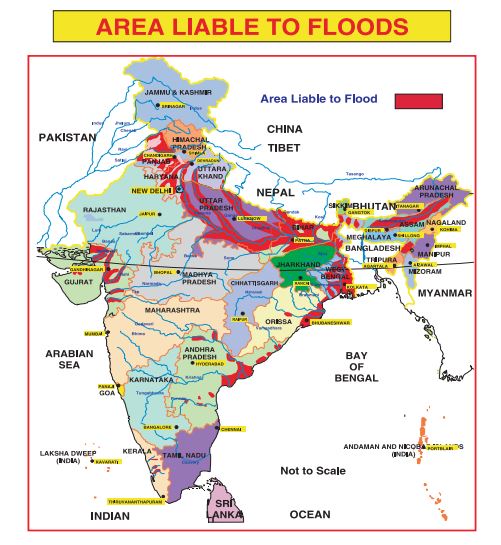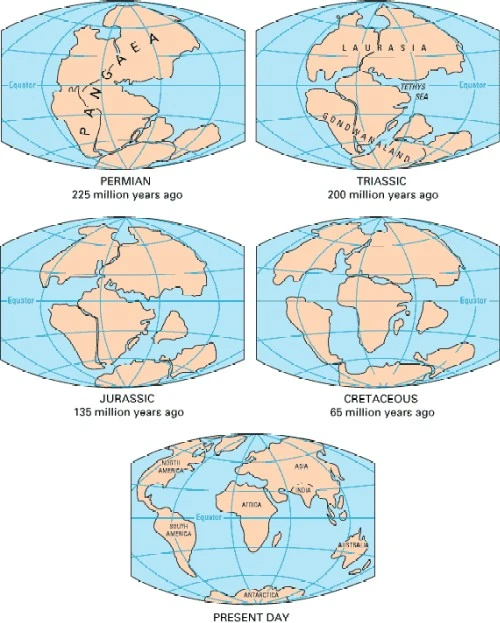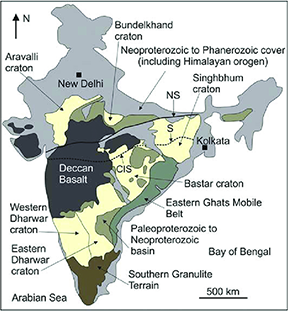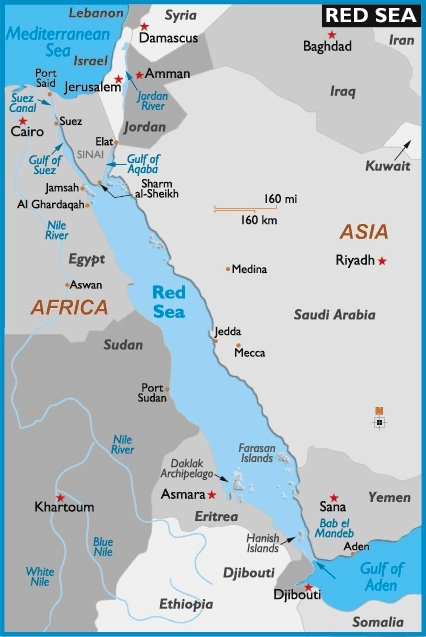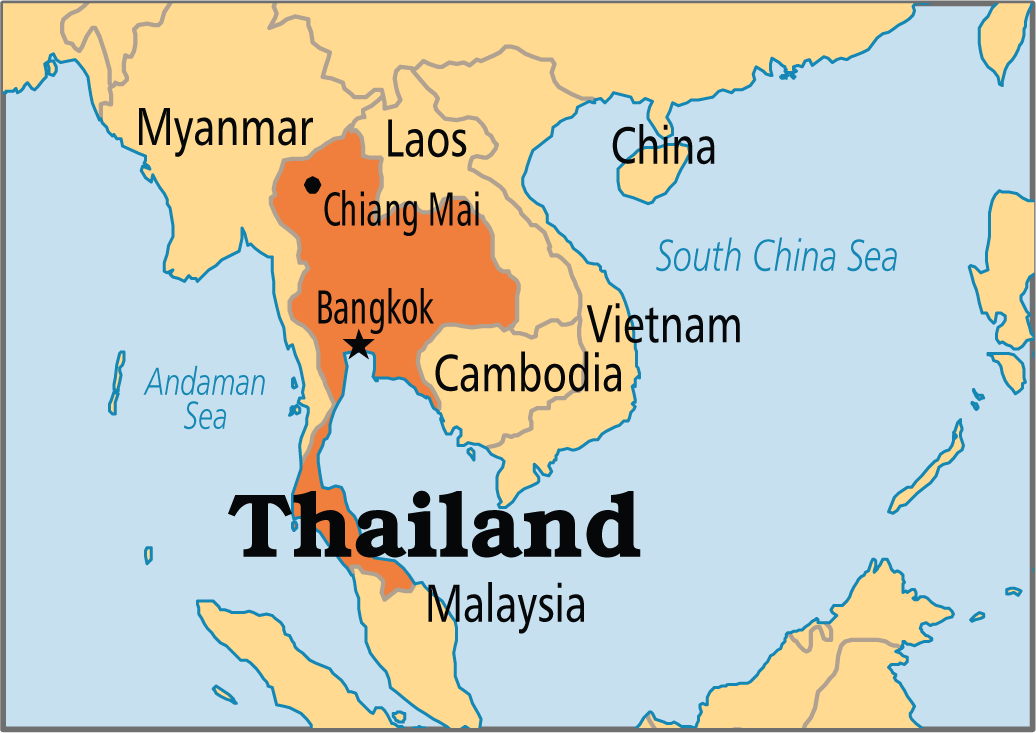RBI’s Retail Direct Scheme
Why in News
Recently, the Prime Minister has launched the Reserve Bank of India (RBI)- Retail Direct Scheme to open up the Government bond market for the retail investors.
Key Points
- About:
- In February 2021, RBI proposed to allow retail investors to open gilt accounts with the central bank to invest in Government securities (G-secs) directly.
- Under the scheme, retail investors (individuals) will have the facility to open and maintain the ‘Retail Direct Gilt Account’ (RDG Account) with the RBI.
- Retail Investor is a non-professional investor who buys and sells securities or funds that contain a basket of securities such as mutual funds and Exchange Traded Funds (ETFs).
- A Gilt Account can be compared with a bank account, except that the account is debited or credited with treasury bills or government securities instead of money.
- The scheme places India in a list of select few countries offering such a facility.
- Aim:
- The move is aimed at diversifying the government securities market, which is dominated by institutional investors such as banks, insurance companies, mutual funds and others.
- While foreign portfolio investors were allowed to invest in G-secs, their holding is around 2-3% in the overall market.
- The move is aimed at diversifying the government securities market, which is dominated by institutional investors such as banks, insurance companies, mutual funds and others.
- Scope:
- It offers a portal avenue to invest in Central government securities, treasury bills, State development loans and sovereign gold bonds.
- They can invest in primary as well as secondary market government securities markets.
- Negotiated Dealing System-Order Matching Segment (NDS-OM) means RBI’s screen based, anonymous electronic order matching system for trading in Government securities in the secondary market.
- Significance:
- Building an Atmanirbhar Bharat:
- So far, in the government securities market, small investors class, salaried class, small traders had to invest through banks and mutual funds in an indirect manner.
- Improved Ease of Access:
- It will make the process of G-sec trading smoother for small investors therefore it will raise retail participation in G-secs and will improve ease of access.
- Facilitate Government Borrowings:
- This measure together with relaxation in mandatory Hold To Maturity (securities that are purchased to be owned until maturity) provisions will facilitate smooth completion of the government borrowing programme in 2021-22.
- Financialise Domestic Savings:
- Allowing direct retail participation in the G-Sec market will promote financialisation of a vast pool of domestic savings and could be a game-changer in India’s investment market.
- Building an Atmanirbhar Bharat:
- Other Measures Taken to Increase Retail Investment in Government Securities:
- Introduction of non-competitive bidding in primary auctions.
- Non-competitive bidding means the bidder would be able to participate in the auctions of dated government securities without having to quote the yield or price in the bid.
- Stock exchanges to act as aggregators and facilitators of retail bids.
- Allowing a specific retail segment in the secondary market.
- The secondary market is the market where investors buy and sell securities they already own.
- Primary market deals with new securities being issued for the first time.
- Introduction of non-competitive bidding in primary auctions.
Government Security
- A G-Sec is a tradable instrument issued by the Central Government or the State Governments.
- It acknowledges the Government’s debt obligation. Such securities are short term (usually called treasury bills, with original maturities of less than one year- presently issued in three tenors, namely, 91 day, 182 day and 364 day) or long term (usually called Government bonds or dated securities with original maturity of one year or more).
- In India, the Central Government issues both treasury bills and bonds or dated securities while the State Governments issue only bonds or dated securities, which are called the State Development Loans (SDLs).
- G-Secs carry practically no risk of default and, hence, are called risk-free gilt-edged instruments.
- Gilt-edged securities are high-grade investment bonds offered by governments and large corporations as a means of borrowing funds.
US Inflation and Impact on India
Why in News
Over the last few days, the retail inflation in the US has risen to 6.2%, the highest year-on-year jump in 3 decades. These rising prices have cornered a lot of attention, both globally and in India.
Key Points
- About Inflation:
- Mechanism: It is the rate at which prices increase over a given period. Typically, in India, the inflation rate is calculated on a year-on-year basis.
- In other words, if the inflation rate for a particular month is 10%, it means that the prices in that month were 10% more than the prices in the same month a year earlier.
- In India, inflation is primarily measured by two main indices — WPI (Wholesale Price Index) and CPI (Consumer Price Index) which measure wholesale and retail-level price changes, respectively.
- India has adopted a flexible inflation targeting mandate of 4 (+/-2)%.
- Effect of Inflation on People: A high inflation rate erodes the purchasing power of people. Since the poor have less money to withstand fast-rising prices, high inflation hurts them the hardest.
- However, a moderate level of inflation is required in the economy to ensure that production is promoted.
- Mechanism: It is the rate at which prices increase over a given period. Typically, in India, the inflation rate is calculated on a year-on-year basis.
- Reasons for Rising Inflation in US:
- The Federal Reserve, the US central bank, targets an inflation rate of just 2%. Seen in that context, 6.2% inflation rate is a very sharp increase in prices.
- Typically, inflation spikes can be assigned to either an increase in demand or a decrease in supply.
- In the US, both factors are at play.
- The pace of economic recovery has been much faster than the supply chain recovery, and this has worsened the mismatch between demand and supply, thus triggering a sustained price rise.
- Demand Side Inflation: With the rapid rollout of the Covid-19 vaccination drive, the US economy posted a sharp recovery.
- A part of the inflationary spike came from this unexpectedly fast recovery in all-round demand from consumers.
- This recovery was further fuelled by billions of dollars pumped by the government to not only provide relief to consumers and those who lost their jobs, but also to stimulate demand.
- Supply Side Inflation: The pandemic in 2020 led to widespread lockdowns and disruptions not just in the US, but across the world.
- Companies let go of employees and sharply curtailed production.
- In essence, the global supply chain of production hasn’t resumed production on pre-pandemic levels.
- Inflation Globally: While the US has seen the sharpest increase in prices, inflation has surprised policymakers across most of the major economies, be it Germany, China or Japan.
- Inflation, Indian Perspective:
- Inflation, the Pre-Pandemic Phenomena: While most other economies were surprised by a spike in inflation in the wake of the pandemic, India was one of those rare major economies where high inflation predates the pandemic.
- The pandemic did make matters worse because of supply constraints even when in India demand has not yet recovered to pre-Covid levels.
- Due to this, despite India entering a “technical” economic recession, the RBI has not once lowered its benchmark interest rates (repo rate) since May 2020.
- The RBI has decided to continue with an accommodative stance as long as necessary to revive and sustain growth on a durable basis and continue to mitigate the impact of Covid-19 on the economy, while ensuring that inflation remains within the target going forward.
- Core Inflation, the Worrisome Factor: While the overall inflation average appears quite manageable at present, it is the “core” inflation that is worrying.
- Core inflation rate is the rate of inflation when we ignore the prices of food and fuel.
- It is high, and now threatens to breach the RBI’s comfort zone.
- India’s inflation may worsen in light of the global increase in prices.
- Inflation, the Pre-Pandemic Phenomena: While most other economies were surprised by a spike in inflation in the wake of the pandemic, India was one of those rare major economies where high inflation predates the pandemic.
- Effect of US Inflation on India:
- When prices increase globally, it will lead to higher imported inflation. In other words, everything that India and Indians import will become costlier.
- High inflation in the advanced economies, especially the US, will likely force their central banks to abandon their loose monetary policy.
- A tight money policy in advanced economies would imply higher interest rates.
- A tight monetary policy involves increasing interest rates to constrain borrowing and to stimulate savings.
- That will affect the Indian economy in two broad ways.
- Indian firms trying to raise money outside India will find it costlier to do so.
- The RBI will have to align its monetary policy at home by raising interest rates domestically. That, in turn, may further raise inflation because the production costs would go up.
Rising Current Account Deficit
Why in News
According to a recent report by British brokerage Barclays, India's trade deficit has been jumping continuously since July 2021. The widening Current Account Deficit (CAD) is driven by the massive spike in commodity prices led by crude oil.
- The CAD is expected to reach $45 billion or 1.4% of GDP by March 2021. This will put pressure on the fragile economic recovery.
Key Points
- Definition: A current account deficit occurs when the total value of goods and services a country imports exceeds the total value of goods and services it exports.
- The balance of exports and imports of goods is referred to as the trade balance. Trade Balance is a part of ‘Current Account Balance’.
- Factor involved in India’s Current Account Deficit:
- High Oil Imports: In India, close to 85% of the oil demand is met through imports.
- Due to this it is estimated that every $10 per barrel rise in global crude prices will widen the trade deficit by $12 billion or 35 bps of Gross Domestic Product (GDP).
- High Gold Imports: Another force driving down the foreign exchange is gold imports.
- Recovering domestic demand and the ongoing festive season are boosting Gold imports.
- The World Gold Council expects gold demand this year to surpass the 2020 levels and it expects the demand for gold to remain high given the rising wealth effects and incomes.
- Services, the Positive side: The report held that the monthly services surplus has improved from an average of $6.6 billion in 2019 to $7 billion in 2020, and to $8 billion in the first nine months of 2021.
- High Oil Imports: In India, close to 85% of the oil demand is met through imports.
- Overall Impact: The report ruled out an alarming situation and said that with record high foreign reserves, there are no major risks to macro stability or balance of payments conditions.
- However, the widening deficit trend may continue for some time as a combination of demand recovery and rising commodity prices will continue to widen the trade deficit sharply.
Balance of Payments
- Definition:
- Balance of Payments (BoP) of a country can be defined as a systematic statement of all economic transactions of a country with the rest of the world during a specific period usually one year.
- Purposes of Calculation of BoP:
- Reveals the financial and economic status of a country.
- Can be used as an indicator to determine whether the country’s currency value is appreciating or depreciating.
- Helps the Government to decide on fiscal and trade policies.
- Provides important information to analyze and understand the economic dealings of a country with other countries.
- Components of BoP:
- For preparing BoP accounts, economic transactions between a country and the rest of the world are grouped under - Current account, Capital account and Errors and Omissions. It also shows changes in Foreign Exchange Reserves.
- Current Account: It shows export and import of visibles (also called merchandise or goods - represent trade balance) and invisibles (also called non-merchandise).
- Invisibles include services, transfers and income.
- Capital Account: It shows a capital expenditure and income for a country.
- It gives a summary of the net flow of both private and public investment into an economy.
- External Commercial Borrowing (ECB), Foreign Direct Investment, Foreign Portfolio Investment, etc form a part of capital account.
- Errors and Omissions: Sometimes the balance of payments does not balance. This imbalance is shown in the BoP as errors and omissions. It reflects the country’s inability to record all international transactions accurately.
- Changes in Foreign Exchange Reserves: Movements in the reserves comprises changes in the foreign currency assets held by the Reserve Bank of India (RBI) and also in Special Drawing Rights (SDR) balances.
- Overall the BoP account can be a surplus or a deficit. If there is a deficit then it can be bridged by taking money from the Foreign Exchange (Forex) Account.
- If the reserves in the forex account are falling short then this scenario is referred to as BoP crisis.
Flood Plain Zoning
Why in News
Recently, a Comptroller and Auditor General of India (CAG) report on preparedness and response to floods was presented in the Kerala assembly.
- The report was prepared against the backdrop of the devastating Kerala floods of 2018.
- The report pointed out that the state is yet to enact flood plain zoning legislation, 45 years after the Union Government circulated to all states a model draft bill for flood plain zoning legislation.
Key Points
- About:
- Concept: The basic concept of flood plain zoning is to regulate land use in the flood plains to restrict the damage caused by floods.
- Determining Developmental Activities: It aims at determining the locations and the extent of areas for developmental activities in such a fashion that the damage is reduced to a minimum.
- Adds Limitations: It envisages laying down limitations on development of both the unprotected as well as protected areas.
- In the unprotected areas, boundaries of areas in which developmental activities will be banned, are to be established to prevent indiscriminate growth.
- In the protected areas, only such developmental activities can be allowed, which will not involve heavy damage in case the protective measures fail.
- Utility: Zoning cannot remedy existing situations, although, it will definitely help in minimising flood damage in new developments.
- Flood plain zoning is not only necessary in the case of floods by rivers but it is also useful in reducing the damage caused by drainage congestion particularly in urban areas.
- Vulnerability to Floods:
- India’s high risk and vulnerability is highlighted by the fact that 40 million hectares out of a geographical area of 3290 lakh hectares is prone to floods.
- On an average every year, 75 lakh hectares of land is affected, 1600 lives are lost and the damage caused to crops, houses and public utilities is Rs. 1805 crores due to floods.
- Model Bill for Flood Plain Zoning:
- About: The Bill provides clauses about flood zoning authorities, surveys and delineation of flood plain area, notification of limits of flood plains, prohibition of the use of the flood plains, compensation and most importantly removing obstructions to ensure free flow of water.
- It will seek to replace dwellings in low-lying areas by parks and playgrounds as absence of human settlement in those areas would cut down loss of lives and property.
- Challenges in Implementation:
- There has been resistance on the part of the states to follow-up the various aspects of floodplain management including possible legislation.
- The reluctance of the states is mainly due to population pressure and want of alternative livelihood systems.
- The lukewarm response of the states towards the enactment and enforcement of the floodplain regulations has fuelled a significant increase in the encroachments into the flood plains, sometimes authorised and duly approved by the town planning authorities.
- There has been resistance on the part of the states to follow-up the various aspects of floodplain management including possible legislation.
- About: The Bill provides clauses about flood zoning authorities, surveys and delineation of flood plain area, notification of limits of flood plains, prohibition of the use of the flood plains, compensation and most importantly removing obstructions to ensure free flow of water.
- Related Constitutional Provisions and Other Measures:
- Based on the inclusion of drainage and embankments as entry 17 of List II (State List), flood control has been seen to fall under the purview of the state government, except in the case of “regulation and development of inter-state rivers and river valleys,” which is mentioned in entry 56 of List I (Union List).
- Floodplain zoning is firmly within the state government’s ambit as it deals with the land along the riverbanks and land is a state subject under entry 18 of List II.
- The central government’s role can only be to issue advisories and prescribe guidelines.
- Flood control and mitigation are not directly mentioned in any of the three legislative lists included in the seventh schedule Constitution.
- The National Disaster Management Authority (NDMA) in 2008 has issued guidelines for states for floodplain zoning as an important “non-structural measure” to mitigate floods.
- It suggested that areas likely to be affected by floods in a frequency of 10 years should be reserved for green areas like parks, gardens and others while concrete structures should not be allowed there.
- It also talked about other zones in the floodplain like in areas of flooding in a 25-year frequency and asked states to make plans accordingly in those areas.
- Based on the inclusion of drainage and embankments as entry 17 of List II (State List), flood control has been seen to fall under the purview of the state government, except in the case of “regulation and development of inter-state rivers and river valleys,” which is mentioned in entry 56 of List I (Union List).
Way Forward
- As floods cause major damage to life and property every year, it is time the central and the state governments prepare a long-term plan that goes beyond piecemeal measures like building embankments and dredging to control floods.
- There is a need for an integrated basin management plan that brings all the river-basin sharing countries as well Indian states on board.
Emergence of Earliest Continental Landmass
Why in News
A new study has suggested that the earliest continental landmass emerged 3.2 billion year ago instead of 2.5 billion years ago (as per the continental drift theory).
- The study was conducted by researchers from India, Australia and the US.
Continental Drift Theory
- Continental drift theory deals with the distribution of the oceans and the continents. It was first suggested by a German meteorologist, Alfred Wegener in 1912.
- According to the theory, all the continents formed a single continental mass- Pangea and mega ocean- Panthalassa surrounded it.
- Around 200 million years ago Pangaea started splitting and broke down into two large continental masses as Laurasia and Gondwanaland forming the northern and southern components respectively.
- Subsequently, Laurasia and Gondwanaland continued to break into various smaller continents that exist today.
Key Points
- About:
- The study has challenged the widely accepted view that the continents rose from the oceans about 2.5 billion years ago.
- It suggests this happened 700 million years earlier — about 3.2 billion years ago — and that the earliest continental landmass to emerge may have been Jharkhand’s Singhbhum region.
- Patches of the earliest continental land, however, exist in Australia and South Africa, too.
- Geological similarities have linked the Singhbhum craton to cratons in South Africa and Western Australia.
- Major Findings:
- River Channels, Tidal Plains and Beaches:
- The answer to when the first land masses were formed lay in the sedimentary rocks of the region. Scientists have found a particular type of sedimentary rocks, called sandstones.
- Later on they found the age by analysing the uranium and lead contents of tiny minerals.
- These rocks were 3.1 billion years old, and were formed in ancient rivers, beaches, and shallow seas.
- All these water bodies could have only existed if there was continental land. Thus the inference was drawn that the Singhbhum region was above the ocean before 3.1 billion years ago.
- Extensive Volcanism:
- The researchers also studied the granites that form the continental crust of Singhbhum region.
- These granites are 3.5 to 3.1 billion years old and formed through extensive volcanism that happened about 35-45 km deep inside the Earth and continued on-and-off for hundreds of millions of years until all the magma solidified to form a thick continental crust in the area.
- Due to the thickness and less density, the continental crust emerged above the surrounding oceanic crust owing to buoyancy (the quality of being able to float).
- River Channels, Tidal Plains and Beaches:
- Evolution of Organisms:
- The earliest emergence of continents would have contributed to a proliferation of photosynthetic organisms, which would have increased oxygen levels in the atmosphere.
- Weathering of the cratons would have led to nutrient runoff, supplying the ocean with phosphorus and other building blocks for early life.
- Craton are the stable interior portion of a continent characteristically composed of ancient crystalline basement rock.
- Significance:
- At a time when the entire world was debating about changes in climate, it is very important to understand how our atmosphere, oceans and climate came into existence and how they interacted with geological processes operating deep inside Earth to make our planet habitable.
- It will allow us to link the interior of Earth to its exterior in deep time.
- India has three other ancient continental fragments — Dharwar, Bastar and Bundelkhand regions. To understand their evolution the study will serve as a template for studying these other cratons.
Preserving Landraces
Why in News
Recently, Padma Shri award was given to Rahibai Popere, popularly known as Seedmother, from Akole taluka of Ahmednagar, Maharashtra.
- She was awarded for recognition of her work that has helped save hundreds of landraces (wild varieties of commonly grown crops) at the village level.
- Presently, farmers mainly grow hybrid crops.
Key Points
- Hybrid Crops:
- About: A hybrid crop is a result of two different varieties of plant being cross-pollinated to create an off-spring or hybrid that contains the best traits of each of the parents.
- With hybrid rice and wheat, for example, selective breeding over a period of time has allowed scientists to develop varieties that have higher yield or other desirable traits.
- Over the years, farmers have adopted these varieties.
- Related Issues: Crop improvement through selection and breeding over several decades has narrowed the genetic base of most crops.
- Biodiversity allows a natural mechanism for crops to develop traits to face challenging situations.
- However, given the large-scale huan inmterference in crop selection, that ability is now lost in most commercial crops.
- About: A hybrid crop is a result of two different varieties of plant being cross-pollinated to create an off-spring or hybrid that contains the best traits of each of the parents.
- Landraces:
- About: Landraces refer to naturally occurring variants of commonly cultivated crops.
- These are as opposed to commercially grown crops, which are developed by selective breeding (hybrids) or through genetic engineering to express a certain trait over others.
- Utility of Landraces: Amid the threat of climate change, a challenge before scientists and policymakers is to develop varieties that can withstand both abiotic and biotic stresses.
- Rich Genetic Pool: Naturally occurring landraces have a large pool of still untapped genetic material, which can provide solutions.
- The wider the gene pool, the more the chance of developing a trait that can help in surviving extreme climate events.
- Higher Yields With Proper Input: There is a common misconception that landraces have lower yields than hybrids. However, with proper agricultural practices, landraces can give better yield with lower input costs.
- High Nutrition Profile: Many landraces are richer in nutrients than commercially grown variants.
- Rich Genetic Pool: Naturally occurring landraces have a large pool of still untapped genetic material, which can provide solutions.
- Examples of Landraces: Kalbhat is a unique landrace of scented rice.
- Over the years, this variant had almost vanished from cultivators’ fields as hybrid variants became popular.
- It has better climate resilience than popularly grown rice and can withstand floods or drought better.
- About: Landraces refer to naturally occurring variants of commonly cultivated crops.
Way Forward
- Need to Save Landraces: Currently, Landraces survive in only a few rural and tribal pockets, but they too are depleting for want of proper conservation.
- Traditional knowledge about the way these need to be grown, or how seeds are to be saved, is also vanishing.
- Community Led Programme: BAIF community-led programme is worth emulating across the other states.
- The BAIF Development Research Foundation is a charitable organisation based in Urali Kanchan near Pune in Maharashtra, that pioneers agricultural development. It aims to identify germplasm available and, through community participation, create seed banks.
- Research in Landraces: There is much remains to be understood about the germplasms of the landraces.
- It is necessary to understand how these landraces can contribute to climate-resilient agriculture; nutritional profiling too can hold the key to fighting deficiencies.
First Joint Naval Exercise: US, UAE, Bahrain and Israel
Why in News
Forces from the United Arab Emirates, Bahrain, Israel and the United States Naval Forces Central Command (NAVCENT) began a multilateral maritime security operations exercise in the Red Sea.
- This is the first publicly acknowledged naval exercise between the United States, Israel and the two Gulf countries.
Key Points
- About:
- The UAE and Bahrain in 2020 normalised diplomatic relations with Israel under a US-brokered deal known as the Abraham Accords, brought together by shared worries about Iran and hopes of economic gains.
- The US 5th Fleet/NAVCENT is based in the Gulf island state of Bahrain and operates in the Arabian Gulf, Gulf of Oman, Red Sea and parts of the Indian Ocean.
- Since February 2021, Iran and Israel have been accused of engaging in what analysts have called a "shadow war", in which vessels linked to each nation have come under attack in waters around the Gulf in tit-for-tat exchanges.
- Negotiations between Iran and major powers (P5+1) on reviving a 2015 nuclear deal will resume in Vienna on 29th November 2021, with failure carrying the risk of a sharp spike in regional tensions.
- The five-day exercise in the Red Sea is intended to enhance interoperability between participating forces.
- Maritime collaboration helps safeguard freedom of navigation and the free flow of trade, which are essential to regional security and stability.
- The exercises include boarding, search and seizure training on the USS Portland, an amphibious transport dock ship.
- The UAE and Bahrain in 2020 normalised diplomatic relations with Israel under a US-brokered deal known as the Abraham Accords, brought together by shared worries about Iran and hopes of economic gains.
- Red Sea:
- The Red Sea is a semi-enclosed tropical basin, bounded by northeastern Africa, to the west, and the Arabian peninsula, to the east.
- The elongated and narrow-shaped basin extends between the Mediterranean Sea, to the north-west, and the Indian Ocean, to the south-east.
- At the northern end, it separates into the Gulf of Aqaba and the Gulf of Suez, which is connected to the Mediterranean Sea via the Suez Canal.
- At the southern end, it is connected to the Gulf of Aden, and the outer Indian Ocean, via the Strait of Bab-el-Mandeb.
- It is surrounded by desert or semi-desert areas, with no major freshwater inflow.
- 6 Bordering Countries: Yemen; Saudi Arabia; Egypt; Sudan; Eritrea; Djibouti.
6th Edition of Shakti 2021
Why in News
The sixth edition of the Indo-French Shakti 2021 (bilateral joint training exercise), will be conducted in November in Frejus, France.
- From the Indian side, a platoon strength of a Gorkha Rifles Infantry Battalion will participate in the exercise.
Key Points
- About:
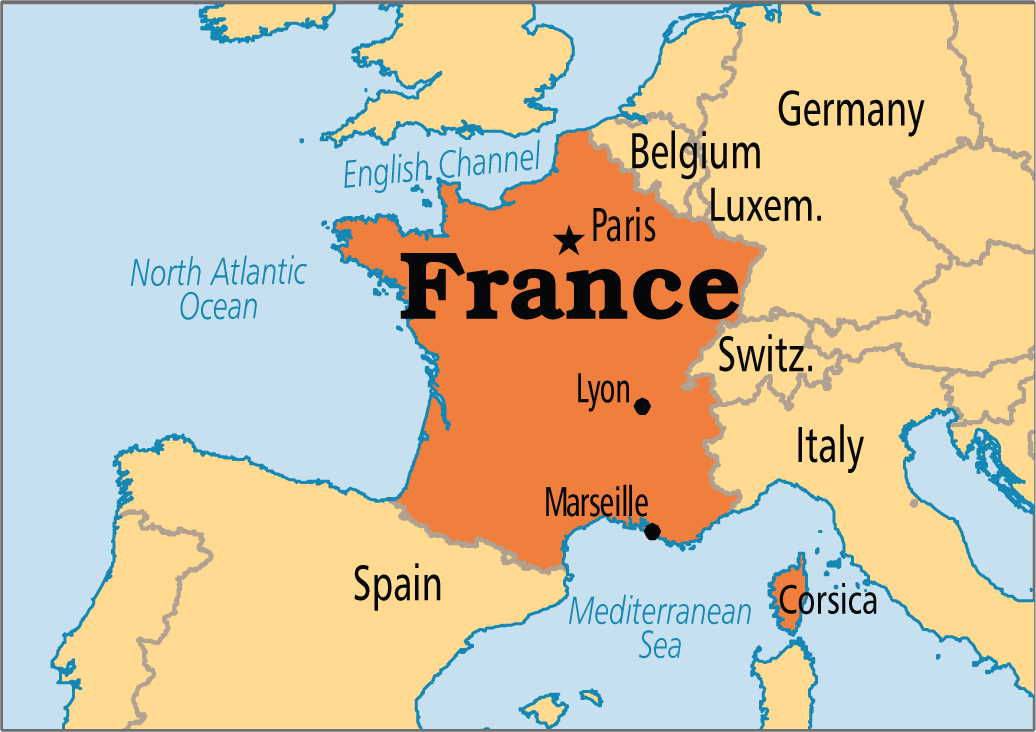
- It will focus on Counter Terrorism operations in backdrop of semi-urban terrain under United Nations Mandate with an aim to enhance military cooperation and inter-operability between the two Armies.
- The biennial exercise between the armies of the two countries had started in 2011.
- It is conducted alternately in India and France.
- The last edition of the Shakti exercise had taken place in Rajasthan in 2019, in which “Counter Terrorism operations in semi-desert terrain were practised”.
- Defence Exercises between India and France:
- Varuna – Naval exercise
- Desert Knight-21 and Garuda (Air exercise)
- Shakti – Army exercise
Note
- Gagan Shakti is conducted by the Indian Air Force to showcase its air dominance over the entire extended area of the Indian Ocean Region.
- Garuda Shakti is the joint military exercise between India and Indonesia.
- Mitra Shakti is the joint military exercise between India and Sri Lanka.
- Harimau Shakti is India-Malaysia joint military exercise.
32nd Edition of Indo-Thai Coordinated Patrol (CORPAT)
Why in News
Recently, the 32nd edition of India-Thailand Coordinated Patrol (Indo-Thai CORPAT) between the Indian Navy and the Royal Thai Navy was conducted.
Key Points
- About Naval Exercise:
- India and Thailand have been carrying out CORPAT along their International Maritime Boundary Line twice a year since 2005.
- Indian Naval Ship (INS) Karmuk, an indigenously built Missile Corvette and His Majesty’s Thailand Ship (HTMS) Tayanchon, a Khamrosin Class Anti-submarine Patrol Craft, along with Maritime Patrol Aircraft from both navies participated in the CORPAT.
- Aims:
- The exercise is aimed towards reinforcing maritime links between the two countries and with an aim of keeping this vital part of the Indian Ocean safe and secure for international trade.
- It facilitates institution of measures to prevent and suppress unlawful activities like Illegal Unreported Unregulated (IUU) fishing, drug trafficking, maritime terrorism, armed robbery and piracy.
- It further helps enhance the operational synergy by exchange of information for prevention of smuggling, illegal immigration and for conduct of search and rescue (SAR) operations at sea.
- In line with India’s SAGAR Vision:
- As part of Government of India’s vision of SAGAR (Security And Growth for All in the Region), the Indian Navy has been proactively engaging with the countries in the Indian Ocean Region towards enhancing regional maritime security.
- This has been through bilateral and multilateral exercises, Coordinated Patrols, Joint EEZ (Exclusive Economic Zone) Surveillance, and Humanitarian Assistance and Disaster Relief (HADR) operations.
- Other Military Exercises between India and Thailand:
- Exercise MAITREE (Army).
- Exercise SIAM BHARAT (Air Force).

